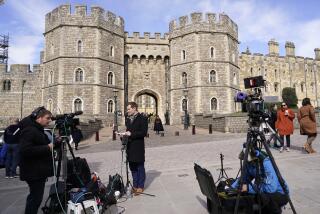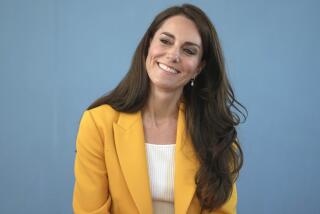5 safety tips for Will and Kate: How to use George’s car seat

When the first pictures emerged Tuesday of William and Kate carrying the newest member of the British royal family home from a hospital, some parents (including a number of staffers here at the Los Angeles Times) noticed something amiss: His Royal Highness Prince George Alexander Louis of Cambridge did not appear to be restrained correctly in his car seat.
The baby was wrapped in a blanket and strapped only loosely into his carrier -- two no-nos when it comes to car seat use.
“I dislike it when I see negative scrutiny directed at any new parents because I think being a new parent is just plain difficult,” wrote Melissa Lawrence, a mother of five who blogs at Cloudmom.com. “But the more I thought about this picture of the royal baby in his car seat, the more it bothered me ... why on Earth [wasn’t he] ... properly positioned in his car seat?”
Sensing a potential teachable moment, The Times called Kate Carr, president and chief executive of Safe Kids Worldwide, for tips on proper infant car seat use.
“Like many parents, they need a few tips to make sure the baby is riding safely,” Carr said of the royal couple, adding that Safe Kids has found that 75% of car seats are not used correctly or installed correctly.
Carr offered the following pointers for the new mum and dad:
1) Forget about swaddling. Keeping an infant wrapped in a blanket makes it impossible to secure the baby safely into his car seat harness. If you want to use a blanket, it should go over -- not under -- car seat straps.
2) Make sure car seat straps are adjusted to fit the baby. Car seat manuals include instructions for adjusting shoulder straps, which in a rear-facing infant seat should thread through slots at or below baby’s shoulder level.
3) Make sure car seat straps are snug. In Tuesday’s photos, Prince George’s looked way too roomy. “If you can take the harness near the shoulders and pinch the straps, it’s too loose,” Carr said. “You shouldn’t be able to get any excess webbing in that harness.”
In the U.S., infant seats must have a chest clip, which should be positioned at armpit level. (European standards do not require a chest clip.)
4) Make sure the car seat is installed properly in your automobile. Carr said she couldn’t tell from the photos whether the Duke and Duchess of Cambridge had George’s seat installed properly, but that parents should make sure the seat is facing the right direction (that is, backward, until a child is 2 years old,) is tilted at the proper angle (usually indicated on the seat), and is installed so that it doesn’t slide more than an inch in any direction.
5) Keep doing all the things you’re already doing well. William and Kate got a lot of things right Tuesday, Carr emphasized. To begin with, they selected the right kind of car seat for their child: a rear-facing infant seat. They also placed George in the back seat of their car. That’s best because air bags in the front seat can be dangerous for babies.
To be completely fair to the royals, having any car seat at all represents a huge step forward since the early 1980s, when Prince Charles and Princess Diana brought Prince William home from the hospital, carrying him in their arms as they climbed into their car (see archival footage here).
“Most children are in child restraints now compared with 20 or 30 years ago,” said Russ Rader, a spokesman at the Insurance Institute for Highway Safety, which rates car seat and booster seat safety. “Statistics show that child restraints do a good job protecting children in crashes.”
For more guidance on car seat safety, check out Safe Kids Worldwide’s info page or the IIHS page on child restraints.







